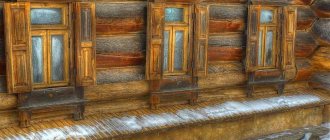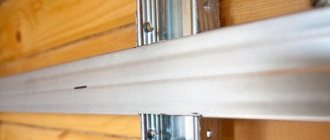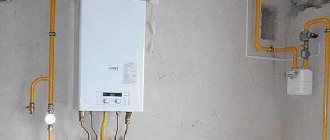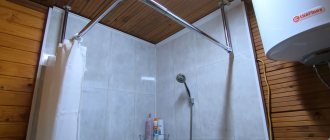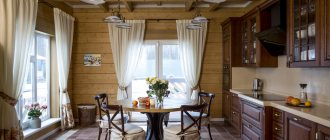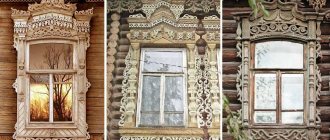As with any building, ventilation in a timber house is needed in any case, even when a small building is being erected in a country house and it is not necessary to approve the plan in the BTI and other organizations. For some reason, many people think that since previously wooden huts were built without the use of ventilation, then even now there is no need to think about it. This opinion is erroneous. Today's wooden buildings have little in common with the huts that our ancestors built. Here are just a few differences:
- The material of modern timber houses is impregnated with glue and anti-rotting agents. Such scaffolding does not allow air to pass through and at the same time “sounds” with phenol, especially in hot and sunny weather.
- Due to better processing, there are practically no gaps left between the timber. In addition, they are puttied or sealed with polyurethane foam;
- Metal-plastic windows have reliable rubber seals. They prevent outside air from passing in;
- In the past, the wide chimney of a Russian stove brought atmospheric dampness out in large volumes. Now he is missing.
Content:
- How ventilation works
- Attic ventilation
- Natural air exchange
- Exhaust ventilation type
- Roof of a wooden house and ventilation features
- Air exchange in the bathroom
- Ventilation of a wooden house toilet
- Ventilation of the floor of a wooden house
- Walls of a wooden house and metabolic processes
- Modern house: ventilation scheme
- Natural ventilation: positive and negative sides
- Air exchange in the house
- Ventilation system: stages of creation
- Supply system: installation features
- Supply and exhaust air exchange system
- Video on ventilation in a wooden house
A wooden house in itself is already a dream. Its owners live in an environmentally flawless home. To make life even better, you need to take care of proper ventilation of all rooms in the house. A wooden house feels moisture more than a stone one. Ventilation in a wooden house is an important factor in the health of the people living in it and the durability of the structure. There are factors that contribute to the destruction of wood without proper ventilation:
- fungus;
- mold;
- humidity.
The hackneyed saying “wood breathes” should not be taken into account when deciding on the installation of a hood in a wooden house.
DIY installation
Before you start arranging the attic ventilation with your own hands, you need to create its design, carefully consider the layout of its components, and write down on paper the sequence of work. During the preparation process, it is imperative to inspect all areas of the attic space, take the necessary measurements, and note the design features of the attic. When performing forced ventilation, it is necessary to select an exhaust fan with the appropriate technical characteristics. Sequence of installation work:
- In the diagram, according to the established designations, the fixation points of the valves and the area for laying the exhaust pipe are marked.
- You need to drill holes in the roof using a drill or hammer drill. These works are carried out very carefully so as not to damage the layers of the roofing cake, the design of which includes roofing, sheathing, waterproofing, insulation and vapor barrier layers. Holes for supply valves are made in the cornice or pediment. You should definitely take into account the placement of supply and exhaust ducts. The first ones are equipped below.
- Valves are being installed in the wall. A tube is inserted into a pre-drilled hole, which is covered with a grille on the street side. A filter is installed on the inside and the valve body is attached. All these elements are included in the valve delivery kit. The gaps between the structural elements and the wall surface are carefully sealed.
- On the roof surface where the hole for the pipe is drilled, the lining is securely fixed, and the quality of sealing of the connecting sections is checked. Next, the pipe is installed strictly vertically. It is imperative to maintain all calculated distances.
- A fan is mounted to the pipe on the inside of the building, and a deflector is mounted on the outside. The ventilation system is ready for operation. The effectiveness of its work is tested over the course of several days.
It is important to understand that properly equipped attic roof ventilation is one of the conditions for comfortable living in a country house. When arranging it with your own hands, it is imperative to comply with established building standards, design it together with the structure of the house and equip it at the stage of erecting the roof of the building.. https://www.youtube.com/embed/VGCQE8ZgaSE
How ventilation works
The air in a wooden house is special, but not because wood ventilates it, but because the material is natural and releases trace elements that create a natural smell. Wood can only absorb or release moisture. The microclimate is maintained only by the ventilation system.
The ventilation device in its classic form involves its placement in the attic. The riser, floors, ceiling are the location of hidden air routes (air is supplied and taken in through them). Distribution boxes are responsible for supplying and removing air. The inside is lined with a material that insulates noise.
The ventilation unit itself has a removable panel for easy filter replacement. Silencers are installed near it. A passage is made in the load-bearing wall to install the outlet. Its tasks include taking air from the street for further supply to the premises of the house.
Silencers are connected to the ventilation unit. A passage is made in the roof and a fungus is installed with a pipe connected to it, which removes air from the installation. Air ducts (corrugated plastic pipes) are connected to the ceiling boxes. The flexible air duct is connected to the air intake and air outlet sockets. Valves and ventilation grilles are installed on the outside of the walls and commissioning work is carried out.
Attic ventilation
Ventilation in a wooden house with an attic floor has its own characteristics. An attic is a residential attic space that is located above the main living spaces. Properly installed ventilation prevents the harmful effects of condensation on the roof structure. Proper air exchange in the attic prevents overheating of the attic in the summer and the formation of ice in the winter (and as a result, corrosion of the metal elements of the roof, wetting of the insulation, the appearance of moisture and mold).
Operating principle of a household recuperator
Most likely, any person will be interested in how heat is transferred from the outgoing flow to the incoming one. Let's consider the operating principle of a household recuperator. This is a small cassette installed in an air duct, the design of which is similar to a radiator and has a large area; this is the heart of the device - the heat exchanger. Passing through it, warm air gives up its heat to the heat exchanger. It heats up and transfers the resulting heat to the incoming flow.
To regulate heating, some devices have an incoming air heater installed. The heating is regulated by the user. If the device is not equipped with a heating element, the temperature of the supplied air is regulated by heating batteries.
Natural air exchange
Do-it-yourself hood in a wooden house is a labor-intensive process and requires certain knowledge. There are several types of ventilation. One of them is natural. Air is supposed to enter the home through cracks in window and door systems. For effective air outflow, care should be taken to ensure that the outflow tract is taken care of. For this purpose, air ducts are installed. Modern construction technologies greatly complicate the process of natural air entering the room. To create conditions for free circulation of air flows in the rooms of the house, holes are made in the door leaf (decorated with grilles). Strong exhaust is ensured by the large length of the air duct.
How not to make a mistake
The range of household heat exchangers is quite large and, although any such device is designed to perform one task - room ventilation, each device has its own differences, advantages, disadvantages, and each of them occupies its own niche, performing some task better than anyone else.
In order not to receive additional education in the field of domestic ventilation, the most effective solution is to contact the Fresh Air company, where experienced specialists will select the optimal equipment to perform the assigned tasks with an optimal quality-functionality-price ratio.
Exhaust ventilation type
The positive answer to the question of whether ventilation is needed in a wooden house is based on many years of experience in the construction and operation of private households. The organization of air flow is the basis of the principles of exhaust ventilation. Air intake must be ensured unobstructed. Natural supply ventilation supplies the house with air from the street. Main advantages:
- efficiency;
- simplicity of the ventilation system design;
- availability.
Exhaust ventilation in a private wooden house is provided for at the design stage. It is a central main line with branches that are designed to ensure the outflow of air from all rooms of the house. To increase operating efficiency, exhaust ventilation is equipped with fans mounted at the entrances of the ventilation ducts. The power of fans varies, so it is selected based on the volume of the room. The fans are economical; there are models with automatic operating modes.
Installing a window inlet valve
Window valves are mounted on the sash; it is quite easy to install this type of supply ventilation yourself in a private house. You will need the following tool:
- screwdriver;
- sharp knife;
- ruler no shorter than 35 cm.
window valve installation procedure
Work progress:
- We cut out the standard seal from the fixed frame in the place where the valve is intended to be installed.
- We install the seal that comes with the valve.
- We mark the location of the valve on the flap; it should coincide with the replaced area.
- We remove the seal section on the flap as well.
- We install valve plugs into the resulting gap. They must fit entirely into the slot so that the valve can subsequently be attached to them.
- The valve is glued to the double-sided tape and secured to the fasteners with self-tapping screws.
- A seal is inserted between the fasteners.
Now you can check the valve in action. The window inlet valve has several advantages:
- easy to install;
- during installation, all enclosing structures remain intact and intact;
- you can regulate the intensity of the inflow or completely block it.
And there is only one drawback: in severe frosts it can freeze. But there are branded models that do not have this drawback. You will have to pay more for them.
Another model of window valve is the handle valve. A very convenient device, the installation of which will have to be entrusted to a specialist.
Roof of a wooden house and ventilation features
One of the main problems that arise when operating a house is the so-called “dew point”. Natural cooling of the air heated in the house leads to condensation in attic structures, which causes gradual destruction of structures. To ventilate gable roofs, they resort to arranging natural ventilation by making holes. This system is not suitable for flat roofs. Supply ventilation can solve the problem. This type of ventilation involves mechanical air injection. A heater is required for the cold season. The air in the room should enter at a temperature of 18 degrees Celsius, and a filter should be installed to prevent dust from entering. The system is controlled automatically to prevent overheating.
Natural
No electrical equipment required. Exhaust ducts are simply laid throughout the house, which are connected to the general house exhaust duct. It is important to do them with a minimum number of turns and bends. This allows air masses to escape freely.
The indoor atmosphere changes naturally due to changes in pressure, temperature and convection currents. In winter, warm air rushes upward, entering the surrounding space outside through the pipes of the exhaust system, and enters the room through microcracks, cracks, the front door, open vents or windows. The concept of natural ventilation also includes the organization of air flow through supply valves of various designs.
Such ventilation is low-cost, since no additional mechanisms are required, but is ineffective due to large heat losses.
It should be remembered that in the warm season, natural ventilation practically does not work, since there is no temperature difference between inside and outside the room. Having air conditioning doesn't help much either. The cooled air falls down and simply remains in the room.
Important!
The end of the exhaust line must be raised above the roof level by at least half a meter, protecting the entrance from moisture with a special fungus. This will avoid reverse draft - cold air entering the house.
Air exchange in the bathroom
Ventilation in the bathroom of a wooden house is designed to get rid of excess moisture (as a result - mold, rotting wood structures, rusting of metal structures). Proper ventilation will ensure:
- comfortable temperature conditions;
- normal humidity;
- influx of fresh air.
Ventilation can be made natural or forced. The second option is much more effective. The costs of electromechanical means of air injection will be recouped by the durability of the structure. The fan check valve solves the problem of the spread of unpleasant odors. Ventilation in a wooden house in the bathroom provides the owners with comfort and health safety, as well as extending the life of the bathroom and the house as a whole.
Ventilation of a wooden house toilet
Ventilation in the bathroom is an important part of ensuring comfortable living. The toilet will need to be artificially ventilated. The fan should enhance the system's performance. It is integrated into the overall ventilation system and enhances air exchange. Modern control systems (sensors) will allow you to control the operating mode of air exchange. The fumes are removed by a network of ventilation ducts. One fan installed in the attic can be common to the entire ventilation system. The following precautions must be taken into account:
- Only fireproof classes of fans are used in the air duct system;
- the air duct is secured using metal stands;
- use of non-combustible air duct materials;
- mandatory fire damper on the bathroom grill.
The fluttering of a burning match will indicate to you the operating status of the air duct system.
Roof outlets
At the exit from the roof, the exhaust pipes are combined into a common rectangular ventilation duct. The common duct can be replaced with separate short ventilation outlets, almost invisible on the roof.
To enhance traction, a special cap is installed above the pipe - a deflector. When there is a side wind or air currents rise from the ground upward, it creates a vacuum and works as an injector. The deflector protects the pipe from precipitation, birds, and other large objects from outside.
There are technical requirements for the height of the channel in relation to the ridge level that must be observed. This is necessary so that the top of the pipe is accessible for wind blowing from any side and there is always draft in the ventilation duct.
Ventilation of the floor of a wooden house
Wood is finicky to use. It is afraid of moisture. Lack of room ventilation will have a detrimental effect on the condition of the floor covering elements. You should not wait for a moment that will have a catastrophic effect on the condition of the house. A well-thought-out ventilation system will help keep the house in perfect condition. Proper underground ventilation in a wooden house can help with this. It is organized using air intakes (in the form of holes). Thanks to this ventilation scheme, the soil under the floor does not freeze.
Application of air conditioners
You can increase air circulation using an air conditioner.
The use of climate control systems is not always justified. Ventilation of the room shows high efficiency in maintaining a good microclimate and supplying fresh air. The air conditioner can be installed on the facade of a wooden house. Then systems that operate for heating and cooling will save on heating costs.
All split systems are equipped with two units that operate synchronously:
- The outdoor unit condenses refrigerant.
- The internal one is a radiator that heats the air around it.
There are air conditioner models that take in outside air. But its share is less than 5%. It makes no sense to buy such products, since they are overpriced and do not perform their functions.
Walls of a wooden house and metabolic processes
Wood is an excellent organic material for construction. Only moisture exchange in wooden structures has nothing to do with air exchange. We are talking about moisture regulation. Human skin also senses gas exchange through moisture exchange processes, but just like wood, the percentage of gas exchange here is negligible. A tree cannot provide the human body with air capable of supporting the normal functioning of the body by regulating the humidity regime.
The question arises - how to make a hood for ideal comfort in the house. The ideal option is a forced ventilation device. It is controlled, that is, manageable. And it is carried out with the help of mechanical devices that provide a comfortable indoor microclimate.
